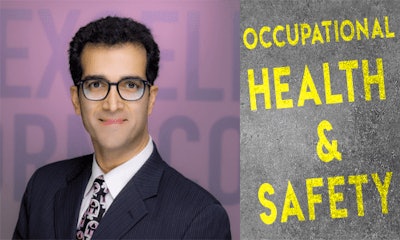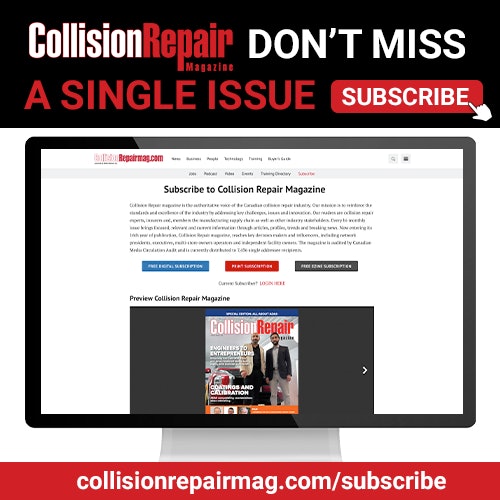
Toronto, Ontario — September 9, 2019 — Is your business hygienic? While that question might sound ridiculous, some environmental hazards in collision facilities aren’t visible to the naked eye.
To find out more about the state of a repair facility’s hidden hygiene concerns, Collision Repair spoke with Ryerson’s Mohammad Abdoli, an associate professor with the University’s School of Occupational and Public Health. An industrial hygienist, Abdoli spoke with this week about risks some repairers forget to look out for and what it means to have an industrial hygenic workspace.
Collision Repair: When looking at a shop’s “industrial hygiene,” what do you specifically look out for?
MA: When it comes to industrial hygiene, we most of the time look into the five main categories of hazards that can impact individuals long-term. This includes physical, chemical, biological, ergonomic and psycho-social hazards. In any form, these hazards can exist in the workplace. If they impact an individual long term, they are health hazards, and if they impact an individual instantly, they are a safety hazard.
CR: What are some health and safety risks repairers often to forget to look out for?
MA: In repair facilities, employees often deal with chemicals used while cleaning, and while repairing the cleaned parts, can be exposed to these chemicals. Acts such as painting and welding can also release hazardous chemicals that repairers are sometimes not prepared for. Physical hazards that include any types of noise – such as the sound of sanding the body of the car or cutting pieces of material for a repair, welding at high speed – can cause longterm effects as well. Other hazards repairers must look our for is heat and cold stress, vibration of the tools that they have to work with, in order to get the job done faster, illumination causing momentary blindness and ergonomic issues such as awkward postures for a long period of time. Psycho-social hazards also occur often during happens during tight deadlines, or when dealing with harassment or conflict at work, which is something most don’t think of when they hear “occupational hazard.”
CR: How can facility owners ensure that their shop is practicing proper Industrial Hygiene and minimize short-term and long-term injuries to their employees?
MA: The most important factor is that they ensure their employees are operating in a facility designed for auto repair. A good shop is equipped with ventilation systems where right after chemicals are released, they are captured and controlled in the spot. Everyone in the facility should use proper protection equipment for everything – the heat, the noise – and are well prepared. To control all hazardous conditions you must ensure that the shop you own, run, or work for has the proper equipment to protect all employees.























